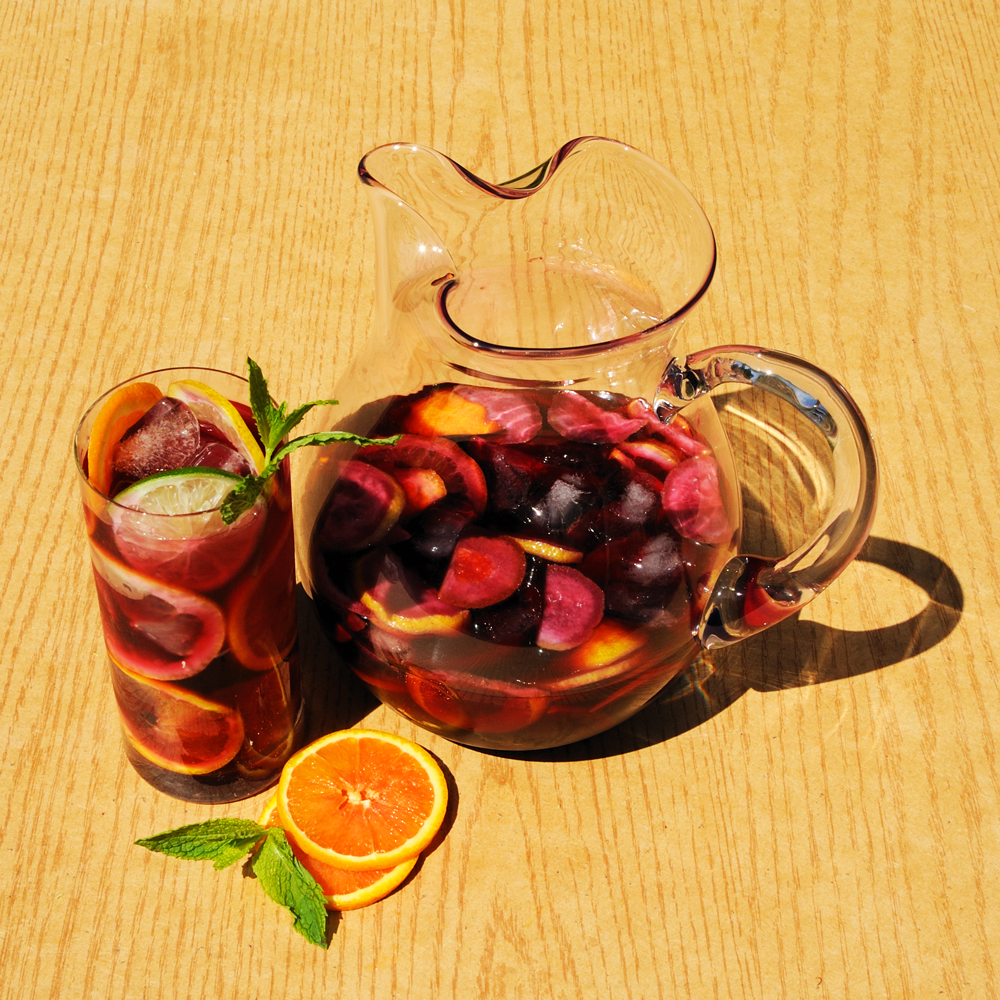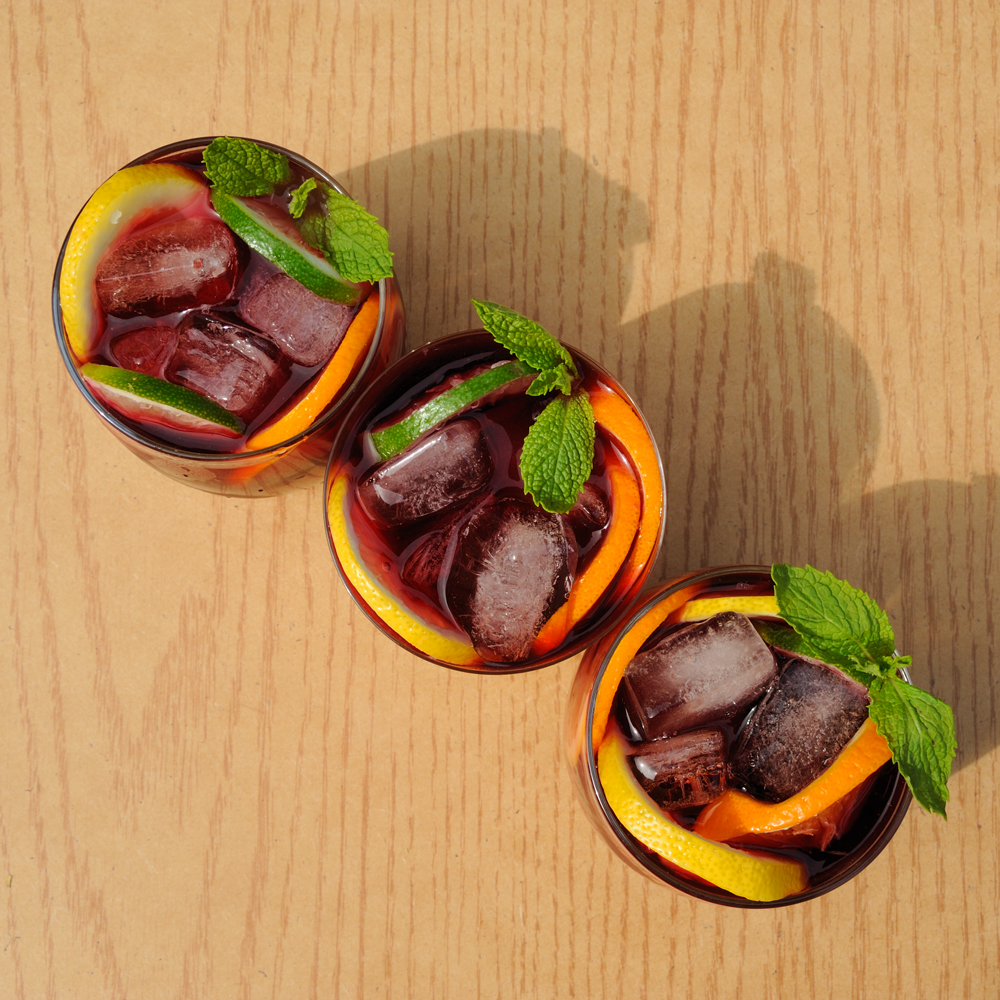
In the embrace of summer, under the radiant sun and amidst the warmth, our cravings lean towards the vibrant, the rich, and the refreshing. It’s the season for Sangria.
Sangria, a delightful wine concoction, weaves together the essence of wine, an array of fruits, an optional touch of sweetness, a dash of brandy (or any preferred spirit), and the effervescence of soda water. The classic Sangria blend includes red wine, a medley of fruits ranging from citrus delights to peaches and apples, brandy, and sweetener (sugar or honey), all harmoniously infused, chilled, and generously adorned with ice.
Considered a cousin to punch or the summer sibling of gluhwein (mulled wine), Sangria shares its core ingredients with the latter, albeit with a refreshing chill replacing the warmth. As with any age-old folk recipe, Sangria revels in its lack of a singular correct formula, encouraging experimentation within certain boundaries to earn its rightful title.
Protected by EU wine law, the term “Sangria” finds its place alongside other flavored wines like vermouth. According to this law, Sangria is a wine-based beverage aromatized with citruses, fruits, or their essences, and may include fruit pieces, sweeteners, and carbonation. The alcohol content ranges from 4 to 12% abv, offering ample room for creative variations.
The roots of Sangria delve deep into the soils of Spain and Portugal. The very name “sangria,” meaning blood, has sparked various legends, yet it likely owes its nomenclature to the beverage’s rich hue.
Sangria’s origins trace back to the early years of the Common Era, during the Roman expansion into the territories of present-day Spain and Portugal. Romans, known for their wine culture, introduced the practice of blending wine with water, a pragmatic solution in regions where water safety was a concern. This not only elevated the water’s quality but also enhanced its taste. The evolution continued with the addition of fruits to this wine-infused water, resulting in the Sangria we relish today. Initially confined to the Iberian Peninsula, Sangria gradually traversed the globe. In the early 18th century, Sangria found its way to Latin America, an expected legacy considering the cultural ties of the inhabitants with Spain and Portugal. Swiftly gaining favor, Sangria soon made its debut in Britain, captivating hearts under the moniker “Claret Cup Punch.” Crafted on the canvas of Bordeaux, the primary red wine of the English at that time, the drink earned its English alias, “Claret,” derived from Bordeaux. The turning point in Sangria’s trajectory occurred in 1964 at the World’s Fair in New York, where the Spanish pavilion generously served Sangria to each visitor. This pivotal moment ignited a fervor for Sangria in the United States, marking the beginning of its widespread popularity on American soil.
Crafting Sangria is a delightful and straightforward process: commence by chopping an assortment of fruits and submerging them in wine. For an extra kick, incorporate a splash of brandy or your preferred spirit. Should your palate desire a hint of sweetness, introduce sugar, honey, or juice. Allow this vibrant concoction to rest in the cool embrace of the fridge, ranging from several hours to a few days. To enhance the aromatic infusion from the fruits, a night’s repose within the fridge is recommended. Once your Sangria is primed, garnish with ice in glasses or a jug, and relish the symphony of flavors.
The classic fusion of citrus fruits with red wine is a timeless choice, with Rioja or a Bordeaux blend offering an authentic touch, especially if you find resonance with Merry England’s cultural tapestry. Remember, the fruit selection will influence the wine’s taste, so align it with your preferences. Opt for Tempranillo for a softer taste or Cabernet for a robust experience.

As alluded earlier, Sangria beckons creativity. The spectrum of fruit choices is vast; for instance, in the south of Spain, Sangria traditionally features peaches and nectarines, known as zurra. The flexibility extends to the choice of wine—white wine transforms it into Sangria Blanco, while Cava, particularly Spanish sparkling wine, imparts effervescence, though any sparkling wine can serve the purpose.
In the modern era, bottled Sangria, meticulously crafted by specialized Spanish wineries, is readily available. Yet, per the wine law, Sangria crafted beyond the borders of Spain or Portugal should explicitly include the country’s name in its nomenclature.
You can try Sangria in a café or restaurant. At its homeland Sangria is served almost everywhere. Although, stay alert! In popular tourist attractions, greedy Spaniards are trying to sell Tinto de verano under the name of Sangria to relaxed travelers. In fact, it’s an inexpensive red wine mixed with ice and diluted with lemon or sweet soda. If you aren’t sure what they offer to you, just ask about the ingredients.
However, the pinnacle of Sangria indulgence lies in the one you craft yourself. A freshly concocted Sangria surpasses its bottled counterparts, providing you the liberty to curate the medley of fruits, wine, and additional elements. In my rendition, I combine red wine, oranges, limes, and lemons, accentuated with a touch of brandy, resulting in a truly refreshing elixir.
Sangria, at its essence, is a communal libation. Invite friends to partake in the shared pleasure of freshly created Sangria and relish the warmth of Summer’s embrace!
Visit my online store for a unique poster featuring this cocktail, along with many other beautiful cocktails and other wine-related subjects.
It’s the perfect way to add a touch of sophistication to your kitchen or bar. Click here to shop now!
Visit my online store for a unique poster featuring this cocktail, along with many other beautiful cocktails and other wine-related subjects.
It’s the perfect way to add a touch of sophistication to your kitchen or bar. Click here to shop now!